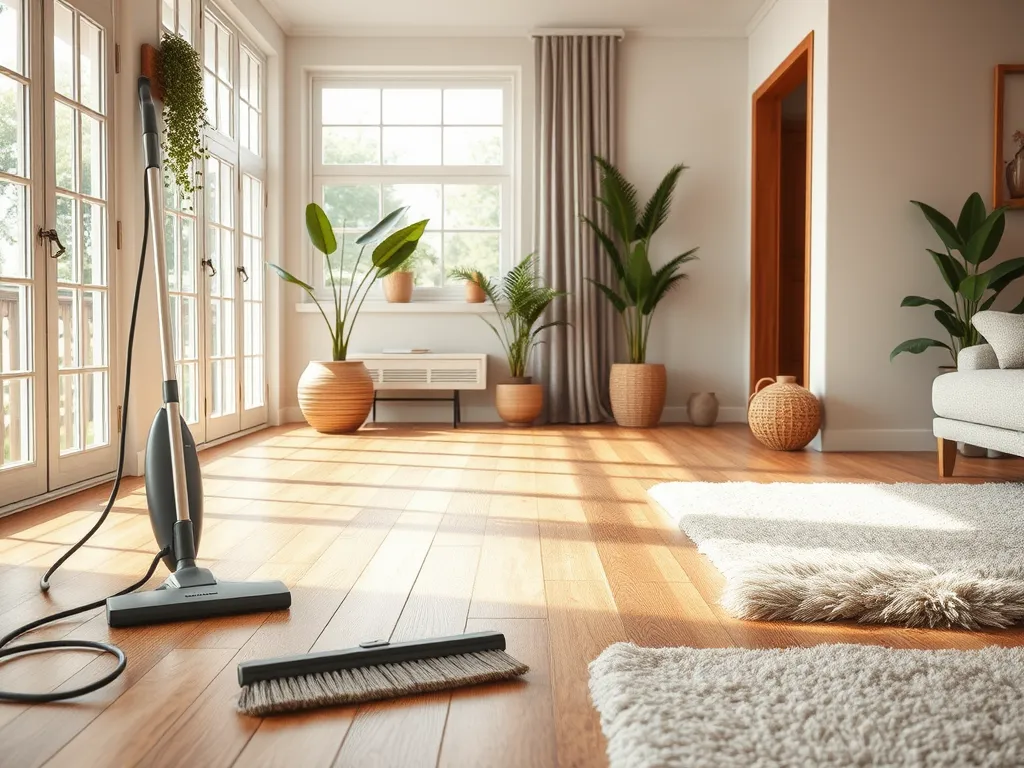Essential Tips for Flooring Maintenance and Care

The Ultimate Guide to Flooring Maintenance and Care
Flooring Maintenance and Care play a crucial role in extending the lifespan of your flooring and keeping it looking its best. Whether you have hardwood, tile, laminate, or carpet, understanding the specific needs of each type of flooring can help prevent damage and costly repairs. This guide aims to provide you with essential tips and best practices for maintaining and caring for your floors throughout the year.
Routine cleaning is a fundamental aspect of Flooring Maintenance and Care. Regular sweeping, vacuuming, and mopping keep dirt and debris at bay, preventing scratches and stains. By establishing a routine cleaning schedule, you can ensure that your floors remain clean and attractive, enhancing the overall appearance of your home.
Regular attention to Flooring Maintenance not only enhances the appearance of your space but also extends the life of your flooring.
Preventive measures also play a key role in flooring care. Taking steps to protect your floors from everyday wear and tear can make a significant difference. From using mats at entryways to managing humidity levels, these preventive strategies can help you avoid damage and maintain the aesthetic appeal of your flooring for years to come.
Repair and restoration are inevitable parts of flooring Maintenance and Care. Even with the best preventive measures in place, scratches, dents, and other imperfections can occur over time. Knowing how to address these issues promptly can save you from more extensive damage and the need for costly replacements. Learning when to tackle a repair yourself or when to call in a professional is essential.
Finally, seasonal care is important for maintaining your flooring through changing weather conditions. Different seasons bring unique challenges, from snow and salt in the winter to humidity in the summer. Adapting your care routine to the seasons can help you keep your flooring in top condition all year long.
Routine Cleaning
Daily sweeping and vacuuming are essential for keeping dust, dirt, and debris from accumulating on your floors. For hardwood and laminate floors, a soft-bristle broom or a vacuum without a beater bar is ideal to avoid scratches. For carpets, use a vacuum with a rotating brush to effectively remove dirt. Aim to vacuum high-traffic areas at least twice a week and the entire floor at least once a month.
When it comes to mopping, it's essential to use the right method for each type of flooring. For hardwood and laminate, use a damp mop with a cleaner designed specifically for that material. For tile and stone flooring, a mixture of warm water and mild detergent can be effective. Always avoid soaking your floors, as excess water can lead to damage.
Using the right cleaning solutions is crucial for Flooring Maintenance and Care. Avoid harsh chemicals that can damage your floors. Instead, opt for pH-neutral cleaners and read the manufacturer’s guidelines for recommendations specific to your flooring type. Regularly maintaining your cleaning supplies ensures that you always have the best products on hand for care.
Preventive Measures
One of the simplest ways to protect your floors is to use mats and rugs in high-traffic areas, especially at entryways. These can trap dirt and moisture before it reaches your flooring, helping to reduce wear. Additionally, investing in felt pads for furniture legs can prevent scratches and dents caused by moving heavy items.
Regularly checking for wear and tear is a proactive measure in Flooring Maintenance and Care. Conduct routine inspections of your floors, looking for signs of scratches, dents, or discoloration. Early detection of issues allows for prompt repairs and can prevent further damage from occurring.
Managing humidity levels is essential for maintaining your flooring's integrity, particularly for hardwood and laminate. Using a dehumidifier during humid months can help prevent warping and buckling. Conversely, ensuring adequate humidity in dry seasons can prevent cracks in wooden floors, providing a balanced environment for your flooring.
Repair and Restoration
Minor scratches and dents can often be addressed without professional help. For hardwood floors, a simple repair can involve using a specialized wood filler or a wax stick that matches the color of your flooring. For laminate, applying a repair kit or using a blend of markers can minimize the appearance of scratches.
When to hire a professional for repairs can depend on the extent of the damage. If you notice significant warping, large gaps in your hardwood, or extensive scratches and stains in carpets, it may be time to seek professional help. A flooring expert can assess the damage and offer restoration options that you might not be able to do yourself.
Restoring hardwood and laminate flooring can bring back its original beauty and extend its life. Options for restoration include sanding and refinishing hardwood floors, which can remove scratches and stains, or applying a new protective coat to laminate floors. Always consult with a professional to determine the best restoration approach based on your floor's condition.
Seasonal Care
Preparing floors for winter weather involves steps like applying protective finishes beforehand to shield against snow, ice, and salt. Be sure to regularly clean off any moisture and debris from winter gear to prevent tracking dirt and damage onto your floors.
Spring is the perfect time for a deep cleaning. Use this season to shampoo carpets and scrub tiles and grouts, ensuring that any buildup of dirt from winter is properly addressed. This not only enhances the cleanliness of your floors but also helps preserve their condition.
Maintaining flooring during high humidity seasons requires attention, especially for hardwood and laminate types. Ensure proper ventilation in your home by using fans or dehumidifiers, and check for areas of moisture buildup. This can prevent long-term damage and keep your floors looking their best.
Flooring Types and Specific Care
Caring for hardwood floors involves regular sweeping and monthly polishing to maintain their shine. Avoid water accumulation, and always use a damp mop with a pH-neutral cleaner. Additionally, place felt pads under heavy furniture to avoid scratches and dents.
Best practices for tile and stone flooring include regular grout cleaning and the use of a sealant to prevent stains. Sweep and mop regularly to keep them pristine, and avoid harsh chemicals that can damage the surface of the tiles or grout.
Maintaining carpet longevity and cleanliness involves regular vacuuming and professional cleaning every 12-18 months. Use the proper cleaning techniques and products designed for your specific carpet material to ensure its longevity and appearance remain in excellent condition.
